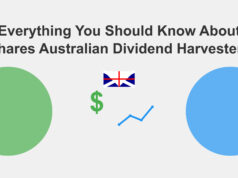If you’re looking for high-paying monthly dividend stocks on the Australian Stock Exchange (ASX) to add to your portfolio, you’re in the right place.
Many dividend stocks or exchange-traded funds (ETFs) on the Australian Stock Exchange pay their investors quarterly and biannual income. Also, some investors receive their dividends every three months.
However, only a few pay out dividends monthly. This article discusses five of the highest-paying monthly dividend stocks in Australia.
What You Need to Know about Dividend Stocks
Dividend stock investing is one of the most lucrative ways to make passive income in Australia. It provides you with the opportunity to earn periodic payments. You will also enjoy capital appreciation as the value of a company’s stock increases.
Most dividend-paying companies make monthly, quarterly, or biannual payments to their investors from their profits. Payments can be made in cash, shares, or other assets. Investors can also profit by selling their shares when the company’s stock appreciates.
Dividend paying stocks in Australia, especially the ones from dividend aristocrats, are generally safer than growth stocks, which are stocks of growing companies.
While growth stocks promise higher returns in the long run, most investors prefer dividend stocks because of the periodic payments they offer. This is popular among older investors nearing retirement, as it provides them with regular income during their less active years.
Top 5 Highest Paying Monthly Dividend Stocks in Australia
Here are some of the monthly dividend-paying stocks in Australia:
1. Plato Income Maximiser Ltd (ASX: PL8)
Plato Income Maximiser is an Australian-listed investment company (LIC) that provides monthly income to shareholders through fully franked dividends. An LIC is a company that invests in the shares of other listed companies.
As of October 2023, Plato Income Maximiser had the following stocks listed in their portfolio:
- Woodside Energy Group Ltd (ASX: WDS)
- New Hope Corporation Ltd (ASX: NHC)
- Fortescue Metals Group Ltd (ASX: FMG)
- Viva Energy Group Ltd (ASX: VEA)
- Pilbara Minerals Ltd (ASX: PLS)
- CSR Ltd (ASX: CSR), Etc.
According to their most recent report, as of October 2023, PL8’s investment portfolio delivered a total return of 8.0% per annum (after fees). It has distributed a yield of 7.6% per annum (including franking) since its inception in 2017.
PL8’s board members agreed to pay three fully-franked dividends of AU$0.0055 per share payable in October, November, and December 2023.
Also Read: Mutual Funds: Definition, Types and Benefits
2. BetaShares Australian Dividend Harvester Fund (ASX: HVST)
The Australian Dividend Harvester Fund (HVST) is an ETF from BetaShares that provides investors access to a diversified portfolio of Australian shares. It aims to provide investors with franked dividends that exceed the net income yield of the broad Australian share market every year.
HVST has its funds distributed across different sectors, with the financial, materials, health care, industrials, and energy sectors having the major investments.
As of November 2023, HVST paid their shareholders a monthly distribution of $0.07 (80.2% franked). Its investment portfolio has distributed a yield of 7.1% since its inception in 2022.
3. Metrics Master Income Trust (ASX: MXT)
Metrics Master Income Trust (MXT) is another share investment that pays monthly dividends to shareholders in Australia. It’s a limited investment trust (LIT), which functions like an ETF.
MXT invests primarily in debt instruments and loans, as it aims to provide monthly cash flow to its shareholders, who prioritize capital security and regular income.
With a market capitalization of $1.99 billion and over $14 billion worth of assets in its portfolio, MXT is a promising investment for Australian investors. At 7.60% per annum (net of fees), it has already exceeded its target of returning 3.25% above the Reserve Bank of Australia’s (RBA) cash rate for 2023.
MXT’s monthly dividends to its shareholders are usually unfranked because the dividend payments come from loan interests, not corporate dividends. Its last distribution to its shareholders was 1.62 cents per unit.
4. Kelly Partners Group Holdings Ltd (ASX: KPG)
Kelly Partners Group Holdings Ltd. (KPG) is a company that provides services to leading Australian accounting firms. It is one of the few Australian companies that pays a monthly dividend to shareholders.
KPG currently has a market cap of $213.75 million. Despite a net profit drop from $5.56 million in 2022 to $3.92 million in 2023, KPG has consistently made its dividend payments.
With a dividend yield of 1.7%, KPG sits below the bottom 25% of dividend payers in the Australian market (2.8%). However, it’s consistently paid fully franked dividends of $0.004 per share since July 2023 and is looking to increase them in the coming months.
Also Read: Does Crowdfunded Real Estate Investment Still Work in Australia?
5. Perpetual Credit Income Trust (ASX: PCI)
Perpetual Credit Income Trust (PCI) pays a monthly dividend to shareholders as it targets to exceed the RBA cash rate by 3.25% per annum. PCI holds a portfolio of approximately 50 to 100 credit and fixed-income assets diversified by country, asset type, credit quality, loan maturity, and issuer.
PCI has a market cap of $439.06 million. As of December 11, 2023, PCI paid its shareholders a monthly distribution of $0.679, a slight increase on the November payout of $0.678. Its dividend yield of 7.21% makes it one of the top 25% dividend payers in Australia.
How to Research Dividend Stocks
While some dividend stocks are great for any investment portfolio, some carry more risk than growth stocks. Here’s how you can research and get the best dividend stock to invest in:
Research the Dividend History
The first step in getting a rewarding dividend stock is to examine the company’s dividend history.
Some aristocratic companies have a long history of consistently paying out increasing dividend returns to their shareholders. Similarly, many companies promise to pay dividends and, halfway through, discover they don’t have what it takes to do so. In contrast, some just promise high dividends to deceive people into investing in their stock.
You must research and ensure the dividend-paying companies you’re investing in have consistently done so in the past few years or decades.
Examine the Payout Ratio
The payout ratio is another important metric you can use to determine the viability of a dividend-paying stock. A very high ratio might indicate that the company can’t maintain its dividend payments. This is often because it’s not retaining enough earnings for future growth. And a very low ratio might not be worth risking your funds at all, as there’s a high level of risk in stock investments.
Also Read: How to Use Insurance as a Form of Investment in Australia
Assess the Company’s Financial Health
A company’s financial books provide vital information on whether it can pay dividends consistently.
Assess the company’s income statement, balance sheets, and cash flow statement to be sure they’re financially healthy to pay out dividends regularly.
Study the Company’s Business
Some companies operate in more stable industries, while others operate in volatile industries where economic cycles can greatly impact their dividends and stock prices.
Understanding their business enables you to know how much risk you’re willing to take, as returns from volatile industries might be unreliable.
Consider the Dividend Yield
Of course, the dividend yield is another important factor you must consider when investing in dividend stocks. While it might be tempting to invest because of a high yield, it’s important to understand why it is so high. In some cases, a low yield that’s paid out consistently is preferable to a high yield that’s not consistent.
Conclusion
Monthly dividend paying stocks are great investment options for individuals and businesses looking for a regular income and capital gain investment.
Hopefully, this article has given you insights on a few monthly dividend-paying stocks you can add to your portfolio.









